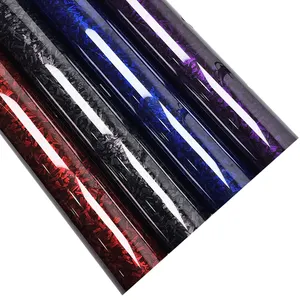
All categories
Featured selections
Trade Assurance
Buyer Central
Help Center
Get the app
Become a supplier














Đầu tư vào sự hoàn hảo. bọc vinyl màu xanh được liệt kê tại Alibaba.com là một cách kỳ diệu để nâng cao hiệu quả trong các dự án yêu cầu chúng. Chúng có trong một bộ sưu tập khổng lồ bao gồm nhiều lựa chọn phong phú để bạn lựa chọn. Chúng bao gồm màu sắc, kích thước và thiết kế riêng biệt phù hợp cho gia đình, khách sạn, văn phòng, trong số các tổ chức công và tư khác. Điều này đảm bảo rằng mọi người mua sắm đều gặp phải sự hoàn hảo. bọc vinyl màu xanh cho mục đích sử dụng của chúng.
Những điều này nổi bật. bọc vinyl màu xanh tự hào về các thiết kế và hình dạng sáng tạo giúp dễ dàng lắp đặt, sửa chữa và thay thế. Thuộc tính này làm cho chúng rất phổ biến trong số người dùng vì chúng hiệu quả và tiết kiệm thời gian. Vật liệu của chúng cực kỳ chắc chắn, cho phép chúng chịu được trọng lượng lớn và chống vỡ. Bởi vì chúng không thấm nước và chống ăn mòn, chúng cung cấp cho người dùng tuổi thọ cao với các dịch vụ đặc biệt.
Tất cả đều có màu sắc rực rỡ và phong cách. bọc vinyl màu xanh được giới thiệu trên Alibaba.com mang đến cho không gian sử dụng sự sang trọng đáng kể. Chúng kết hợp nhuần nhuyễn giữa phong cách trang trí và các yếu tố khác để mang lại vẻ ngoài đẹp nhất cho bất kỳ không gian nào. Chúng cũng cực kỳ đơn giản để làm sạch, cho phép người dùng duy trì vẻ sang trọng của họ mà không gặp rắc rối. Do đó, chúng được làm bằng vật liệu có thể tái chế là chìa khóa để bảo vệ môi trường vì chúng có thể biến đổi thành các vật dụng khác thay vì vứt bỏ chúng.
Với quyền. Tùy chọn bọc vinyl màu xanh tại Alibaba.com, người mua sẽ được hưởng giá trị tốt nhất cho số tiền họ chi cho chúng. Sự sang trọng, tiện dụng và dễ bảo trì khiến chúng đáng giá từng đồng. Mua chúng từ trang web vô cùng có lợi, đặc biệt là với năng lượng và thời gian người mua tiết kiệm được khi tìm kiếm các mặt hàng thích hợp.